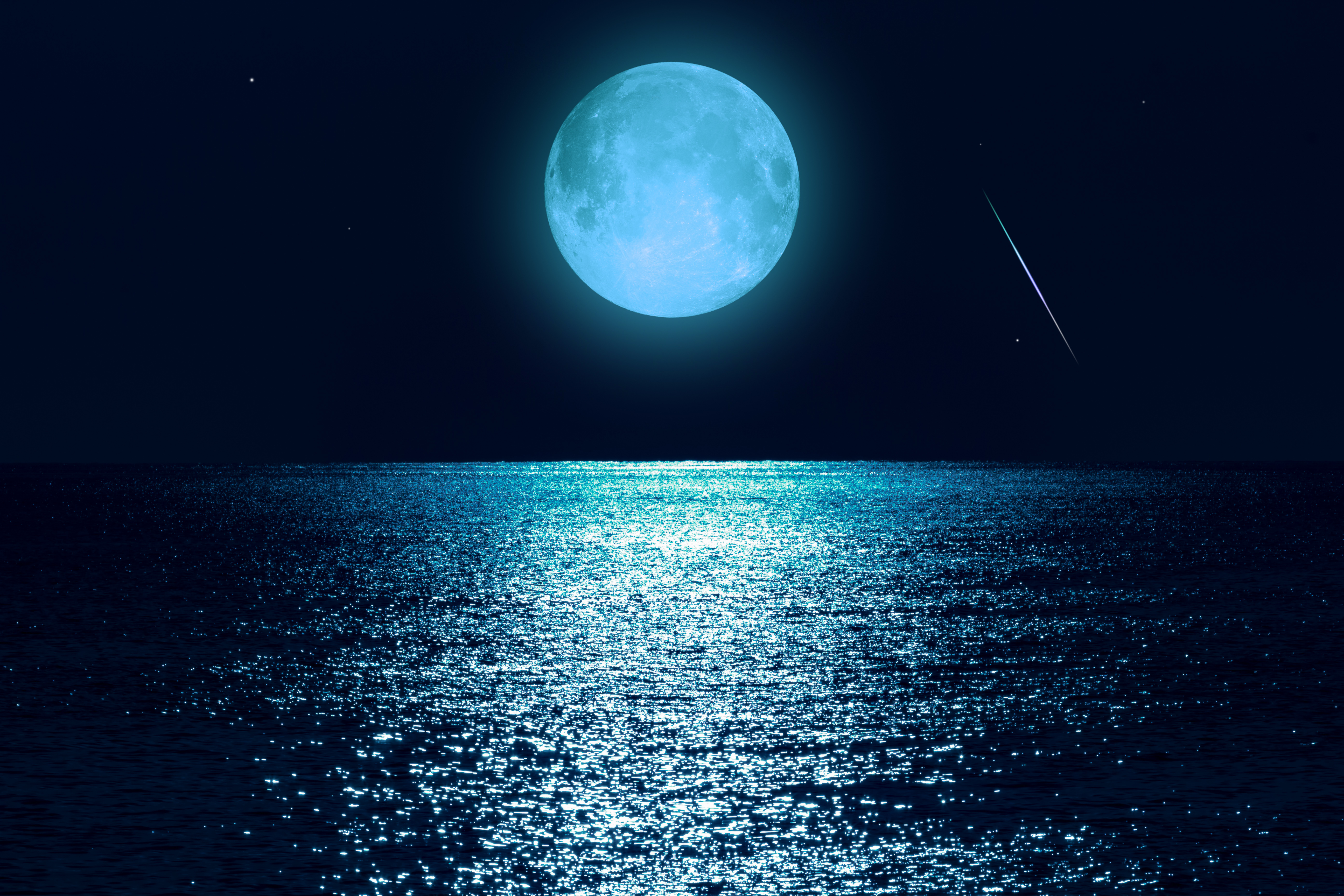
This Monday, August 19, 2024, a full blue supermoon in Aquarius will peak at 2:26 PM ET.
But what exactly is a Blue Moon, what does it mean, and when can we expect to see one again?
Read on to learn more.
What is a blue moon?
Blue moons fall into one of two categories.
The moon’s cycle is 29.5 days, a hair—or moonbeam—shorter than the average length of a calendar month.
Thus, sometimes a full moon can occur at the beginning of a month, leaving enough time for another later.
By modern definition, when two full moons fall in a single month, the second full moon is called a Blue Moon, monthly Blue Moon, or calendrical Blue Moon.
A seasonal Blue Moon is defined as the third of four full moons in a single season.
How often do Blue Moons happen?
In astronomical terms, Blue Moons grow fairly regularly, roughly every two to three years.
Fun fact – since there are roughly 29.5 days between full moons and February only has 28 days on average and 29 at best, it will never experience a calendar Blue Moon.
Are blue moons ever really blue?
A Blue Moon is not actually blue in color, although in very rare cases it may appear that way, due to atmospheric conditions created by large-scale forest fires and/or large volcanic eruptions.
In the wake of the eruption of the Indonesian volcano Krakatoa in 1884, a massive cloud of ash and dust was sent 50 miles into the stratosphere.
These ash particles acted as a filter, scattering red light and making the moon and sun appear blue-green.
The blue moon of August
On Monday, August 17, we will experience a seasonal Blue Moon, the third of four full moons that rise between the summer solstice and autumn equinox.
After the Lunar New Moon, we won’t see another Blue Moon until May 31, 2026, when one will rise and shine in the sign of Sagittarius.
Why is it called the Blue Moon?
The term “blue moon” is usually attributed to a pair of 16th-century monks who published a scathing pamphlet criticizing the Roman church.
Both argued that the common man tended to take the clergy’s word for granted, even such ludicrous suggestions or statements as “the moon is blue” or “the moon is a ball of cheese.”
Over time, the term lost its pejorative upper notes and became associated with the rare and unusual, if not absurd.
But how did we make the leap between a religious critique and the second full moon in a calendar month?
One explanation, given by the Farmer’s Almanac, links the color blue to Old English thank youmeaning “to betray”.
As the Almanac argues, “Perhaps the moon was ‘belewe’ because it betrayed the usual perception of a full Moon in the month.”
Unlike other monthly or seasonal moon names – Buck, Strawberry, Harvest, etc. – The Blue Moon is not limited to a specific time of year or astrological season.
Astrology 101: Your Guide to the Star
Astrologer Reda Wigle researches and reports irreverently on planetary configurations and their effect on each zodiac sign. Her horoscopes integrate history, poetry, pop culture and personal experience.
#blue #moon #Heres #event
Image Source : nypost.com